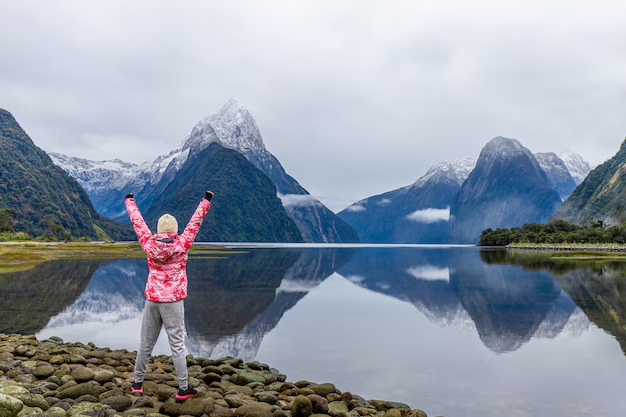Planning a trip to New Zealand but not sure how long to stay? This article breaks down the ideal trip duration, covering everything from short visits to extensive explorations, and helps you decide how long to travel New Zealand to fully enjoy its stunning landscapes and vibrant culture.
Deciding Your Trip Length: Factors to Consider
When planning your trip to New Zealand, the duration of your stay can significantly impact your experience. Here are key factors to consider when deciding how long to stay:
Your Travel Goals
When planning a trip to New Zealand, consider your travel goals as they will influence how long you should stay:
- Short Stay (1-2 weeks): This duration is ideal for a quick overview, allowing you to visit major tourist spots such as Auckland, Wellington, and Queenstown. It’s perfect if you have limited time but want to experience the highlights.
- Moderate Stay (3-4 weeks): With a bit more time, you can explore both the North and South Islands. This allows for activities like hiking in national parks, wine tasting in renowned vineyards, and exploring historical sites.
- Long Stay (Over a month): For a more immersive experience, consider staying over a month. This timeframe allows you to visit off-the-beaten-path destinations, participate in local events and festivals, and truly immerse yourself in the culture and landscapes of New Zealand.
Areas of Interest
New Zealand is divided into two main islands, each offering unique experiences:
- North Island: Known for its vibrant cities such as Auckland and Wellington, rich Maori culture, and geothermal areas like Rotorua.
- South Island: Famous for its breathtaking landscapes including Fiordland and the Southern Alps, adventure sports hubs like Queenstown and Wanaka, and abundant wildlife spots such as Kaikoura and the Otago Peninsula.
Seasonal Considerations
Consider the seasonal variations when planning your visit to New Zealand:
- Summer (Dec-Feb): Best time for beach activities, outdoor festivals, and exploring coastal regions. It’s popular for water sports like surfing and sailing.
- Autumn (Mar-May): Ideal for hiking and photography with mild weather and stunning foliage colors. Wine regions also come alive during the harvest season.
- Winter (Jun-Aug): Perfect for skiing and snowboarding in mountainous regions such as Queenstown and Canterbury. Thermal hot springs are popular in colder regions.
- Spring (Sep-Nov): Great for witnessing blooming flowers and newborn wildlife. It’s ideal for outdoor activities before peak summer crowds.
Example Itineraries

Planning a trip to New Zealand involves considering the duration of your stay and the experiences you wish to include. Here are tailored itineraries for different lengths of visit:
Quick Tour: 10 Days
For those with limited time, a quick tour of New Zealand can still cover major highlights:
- Days 1-3: Begin in Auckland, exploring the city’s vibrant culture and nearby islands like Waiheke for wine tasting and beaches.
- Days 4-5: Travel to Rotorua to experience Maori culture at Te Puia and Whakarewarewa Village. Visit geothermal parks like Waimangu and Wai-O-Tapu.
- Days 6-7: Head to Wellington, New Zealand’s capital, known for its museums (Te Papa) and picturesque waterfront. Explore the vibrant food scene and local art galleries.
- Days 8-10: Conclude your tour in Queenstown, the adventure capital. Enjoy activities such as bungee jumping, jet boating on the Shotover River, and hiking in nearby Fiordland National Park.
In-Depth Exploration: 3 Weeks
For a more comprehensive exploration of New Zealand’s diversity:
- Week 1: Begin on the North Island with Auckland’s urban attractions and the scenic Coromandel Peninsula. Visit Hot Water Beach and Cathedral Cove for natural beauty.
- Week 2: Take the ferry to the South Island, exploring Nelson’s art scene and the serene Marlborough Sounds. Sample world-class wines in Marlborough and visit the historic city of Christchurch.
- Week 3: Head to Queenstown for adventure sports and stunning landscapes. Take a day trip to Milford Sound, known for its dramatic fjords and waterfalls in Fiordland National Park.
The Extended Stay: Over a Month
For those seeking a deeper immersion into New Zealand’s culture and landscapes:
- Take your time in each location: Spend extended periods in places like the West Coast, known for its rugged beauty and glaciers, and the Catlins for its wildlife and coastal scenery.
- Participate in local events: Join seasonal activities such as vineyard harvests in Marlborough, winter sports in Queenstown, or cultural festivals throughout the country.
- Explore lesser-known areas: Discover hidden gems off the tourist trail, such as the volcanic landscapes of Tongariro National Park or the remote beaches of the Abel Tasman Coast Track.
Budgeting for Your Trip
Understanding the financial aspect of how long to travel to New Zealand is crucial. Here’s a basic breakdown of potential costs (in USD):
| Duration | Flights | Accommodation (per night) | Daily Expenses |
| 1-2 weeks | $1200 | $50-$150 | $100 |
| 3-4 weeks | $1200 | $50-$150 | $75 |
| Over a month | $1200 | $40-$140 | $70 |
Note: Prices vary based on season and region.
Conclusion
Deciding how long to travel New Zealand depends largely on your interests, budget, and the experiences you wish to have. Whether you’re looking for a brief introduction or a thorough exploration, New Zealand offers a diverse range of activities and sights that cater to every type of traveler. Plan according to your interests and time available to ensure a memorable and fulfilling trip.
FAQ
A: The ferry from Wellington to Picton takes about 3-4 hours, but allow a full day for the entire journey including transfers.
A: Renting a car or campervan offers the most flexibility and is highly recommended for exploring both islands extensively.
A: Absolutely! New Zealand is family-friendly with plenty of outdoor activities, wildlife parks, and interactive museums.
A: Weather can be variable, so pack layers, waterproof clothing, sun protection, and sturdy footwear.
A: Most visitors will need an NZeTA (New Zealand Electronic Travel Authority). Check the official New Zealand immigration website for details based on your country.
